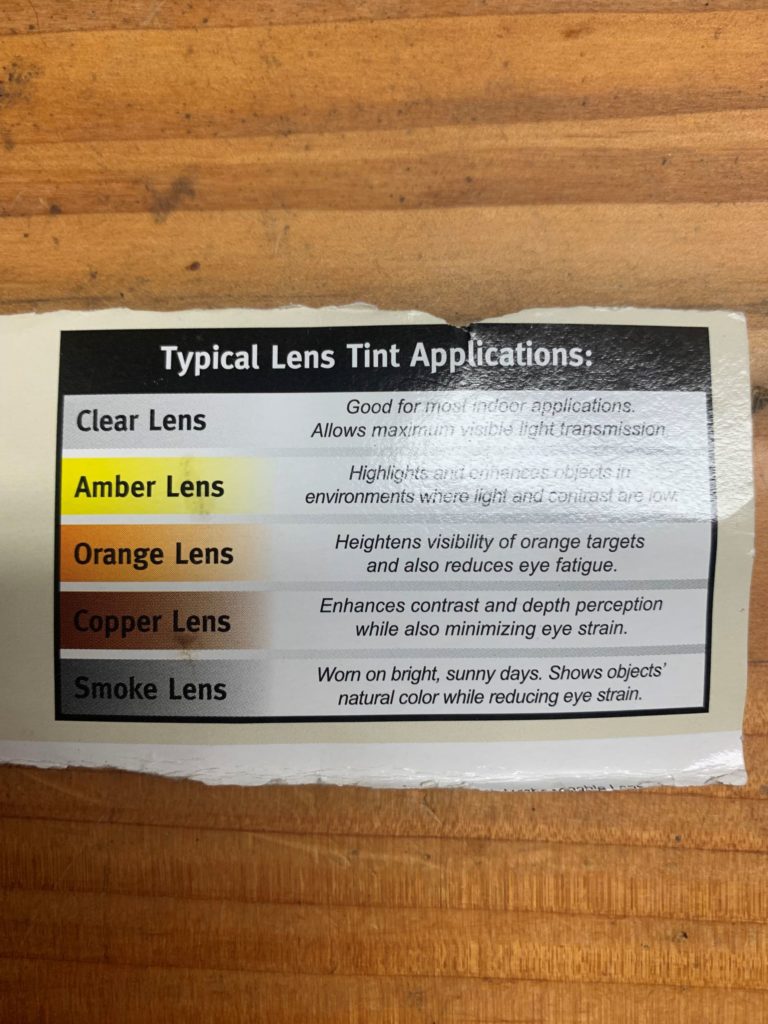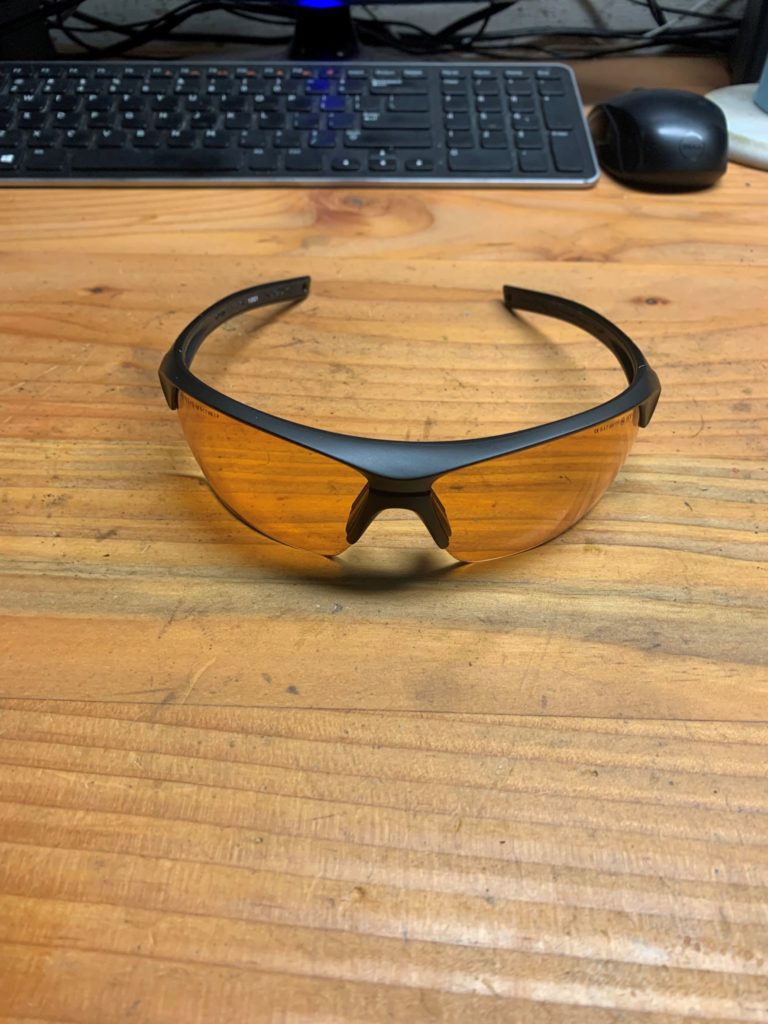This came up in Trap a few weeks ago, that is the color of shooting glass lenses and the environmental conditions. This is helpful for shooting but it is also helpful in fishing as well. Different color of lenses can give you a tiny advantage with different light conditions.

When I first got my range membership, I thought I would treat myself to some new shooting glasses. I bought a multi lens pack that contained a range of different colors. On the package, there is a guide that helps select the right conditions for the right lens.
I personally like clear for indoors, yellow for overcast or low light and grey/black for sunny days. I think that gives a lot of versatility. But there are many more variations. Not being a professional or a competitor, I could see how maybe any slight advantage might be helpful but I can get by with the three.
Since my son adopted my shooting glasses during trap season, I decided to see what was out there and upgrade. I recently bought a pair of WileyX WX Saints. You might say they are safety glasses or sunglasses but they have interchangeable lenses. The truth is, many sunglasses can also work as safety glasses. The important thing is that they are tested to ANSI Z87.1 standards. That is the impact test for worthwhile safety glasses.

For fishing, polarized glass is important. Not only do glasses protect your eyes for rays bouncing off the water but they also help you see fish. If you are a sight fisherman, then seeing fish is an advantage to catching them. And, the better you can match the color, the better you can see fish.
Another thing about sunglasses and safety, many sunglasses are more fashion accessories than safety gear. That is to say, the need to have full, wrap around capability to provide the best protection. Many of the blade styles (from Oakley) or the thick temple bands (like Costa and Oakley) provide full protection. I would definitely prefer plastic lenses for safety purposes as well.
One thing I find a pain is wearing glasses and muffs at the same time. After prolonged use, the muffs press the glasses into the head. The glasses also interfere with the muff seal and are less effective at stopping noise. I don’t think this conundrum can be avoided but it has got me thinking of investigating the earbud style hearing protection. Generally speaking, I don’t think they provide as good of protection as the muffs, but they would eliminate the headache of the glasses/muff squeeze. Maybe that is my next purchase.
End Your Programming Routine: As far as safety gear goes, to me glasses are the most important safety gear at the range. The reason being is that hearing protection is definitely a requirement at the line or inside but if you get 20 feet away (as long as you are behind the shooters) sound starts to dissipate. You never know when shrapnel can come back at you, even from other shooters on different bays. I have been shooting in one bay and heard stuff hit the roof from another shooter somewhere unknown. I don’t think it is worth the risk.
Recent Comments